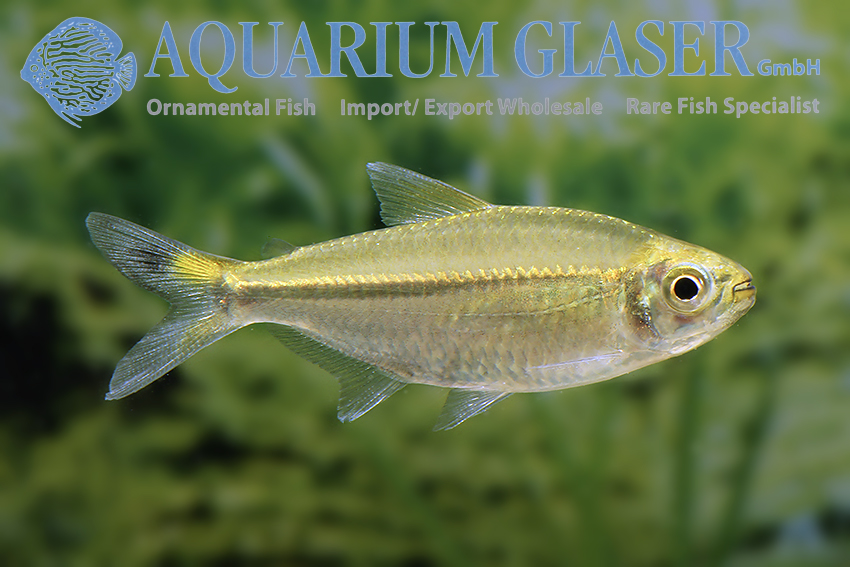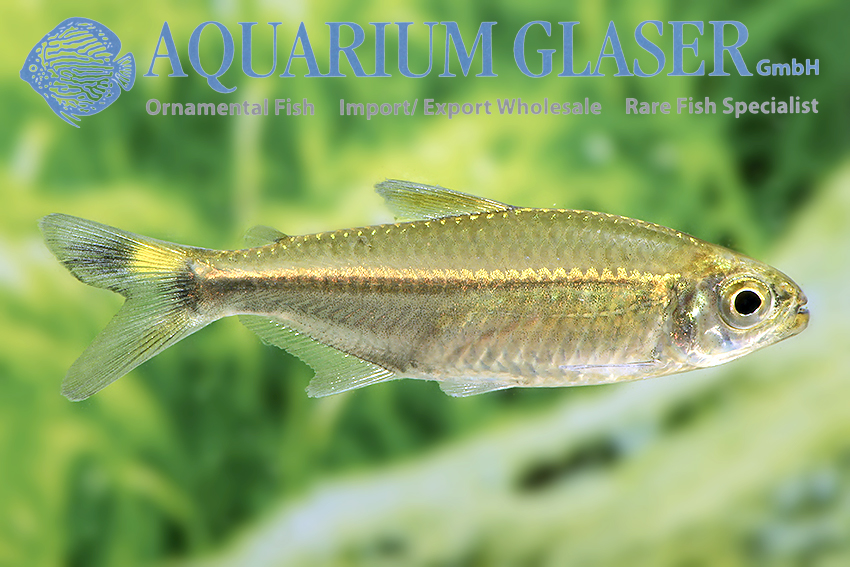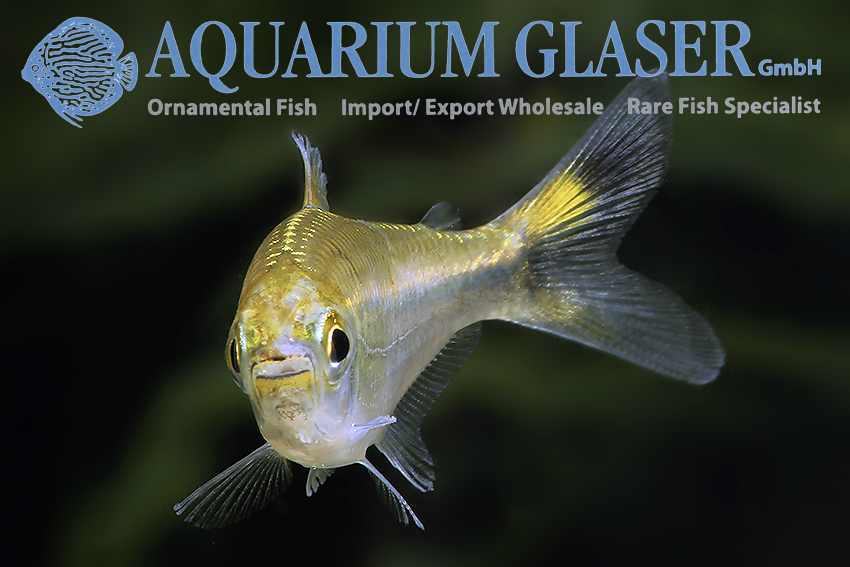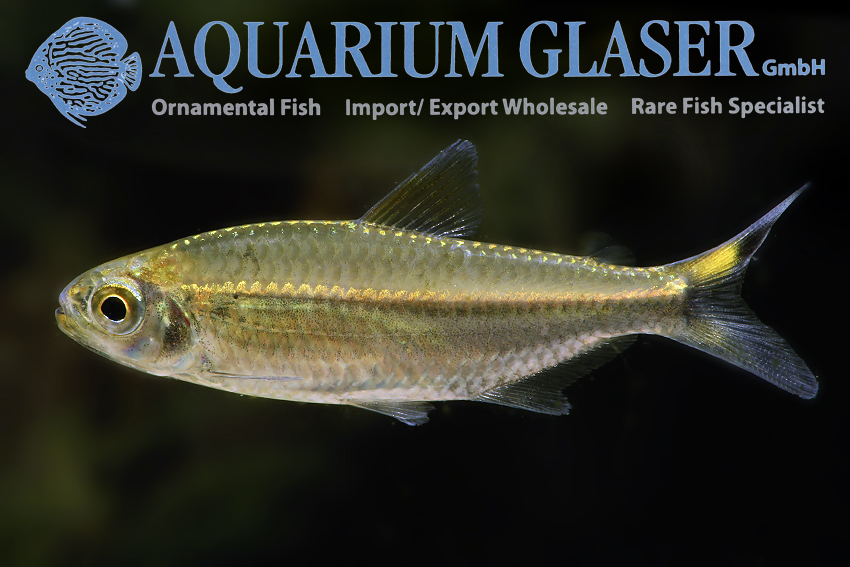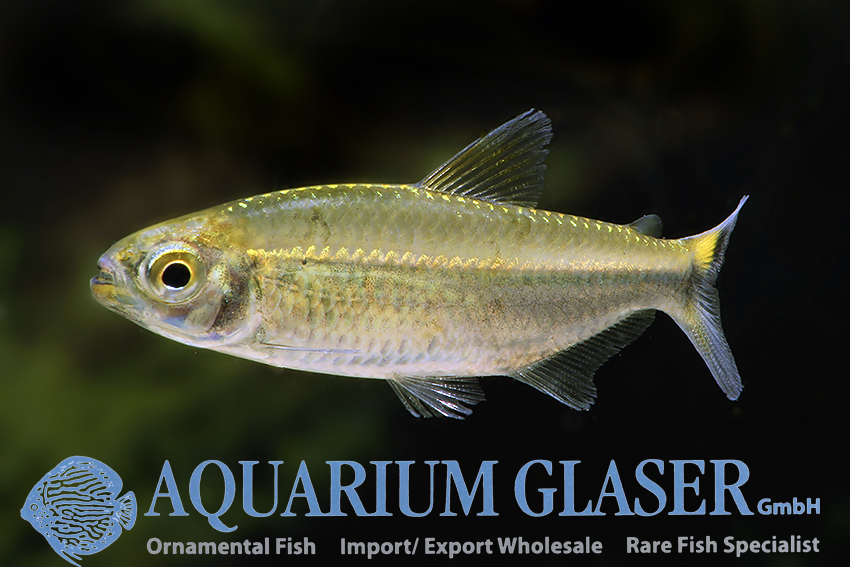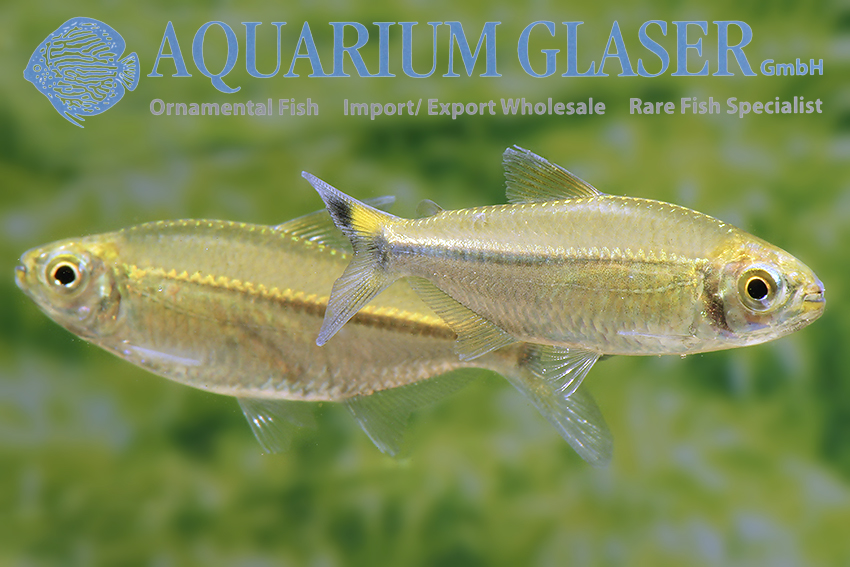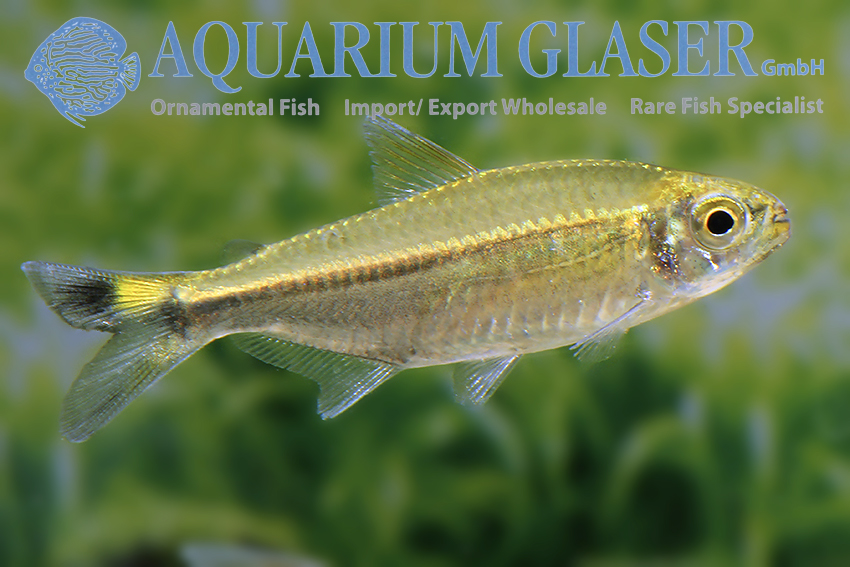For over 150 years a small tetra is known in science, that is placed due to the scaltion of the tail fin at present into the genus Moenkhausia, under the name M. lepidura. The species differs from all other Moenkhausia species, it was thought, by the coloration of the tail fin, in the upper half of which there is a black spot, while the lower half is colorless.
Only in 2016 Marhino & Langeani showed that there are several species with this pattern. They found out that the “real” M. lepidura can be recognized by a special feature in the scalation. On the back of M. lepidura the edges of the scales of the flanks meet directly against each other (like in a house of cards), while in other, similar species an additional row of scales forms a ridge, so to speak. On a photo of this post, in which the fish is taken frontally, this can be seen well.
We have now received from Colombia a Moenkhausia species of this species complex, which cannot be M. lepidura due to back scalation. If one follows the identification key of Marhino & Langeani, it is most probably M. celibela, but there is also much similarity to M. mikia. Of course, we can never completely rule out that this is a scientifically not yet recorded, new species. By the way, our fish are extremely similar in colour to a scientifically undescribed Bryconops species from the Rio Xingu in Brazil. However, Bryconops species have long anal fins, comparatively larger eyes and a completely different swimming behaviour.
For our customers: the animals have code 268663 on our stocklist. Please note that we only supply wholesalers.
Text & photos: Frank Schäfer
Literature:
Marinho, M. M., & F. Langeani (2016). Reconciling more than 150 years of taxonomic confusion: the true identity of Moenkhausia lepidura, with a key to the species of the M. lepidura group (Characiformes: Characidae). Zootaxa, 4107 (3), 338-352.





